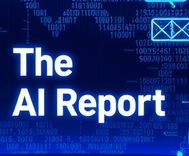A raft of in-depth research finds artificial intelligence causing far more problems than it solves. Why?

The AI Report
Daily AI, ML, LLM and agents news
Is Artificial Intelligence Causing More Problems Than It Solves? A Deep Dive into Recent Research
Recent waves of in-depth research paint a concerning picture for the current state of Artificial Intelligence adoption in the enterprise. Far from being the panacea the hype suggests, AI is proving challenging to implement effectively, struggling to demonstrate measurable business value, and potentially fostering unwelcome user behaviours.
The Promise vs. The Reality: Costs and Unclear Value
Analysis firm Gartner predicts a high failure rate for agentic AI projects, with over 40% expected to be cancelled by the end of 2027. The primary culprits? Escalating costs and, crucially, unclear business value. While a 'me too' trend and 'agent washing' by vendors contribute, the core issue is that current AI models often lack the maturity and autonomy to achieve complex business goals effectively. Despite this, AI's presence will grow, with one-third of enterprise software predicted to include agentic AI by 2028.
This struggle for measurable value is echoed elsewhere. A SS&C Blue Prism study found that while 92% of senior leaders are using AI for business transformation, a significant 55% admit seeing 'little benefit'. Financial reality is also biting. Bowmore research revealed AI-focused investment funds losing money year-on-year. Commentators in the Economist and Financial Times note AI valuations are often based on 'momentum' and hype rather than solid metrics, questioning where the revenue will come from to justify massive capital expenditures on data centers, projected to reach $1 trillion by 2030, with 83% directed towards AI investments.
Microsoft CEO Satya Nadella has pragmatically questioned AI's vast energy consumption and carbon cost, highlighting the need for the technology to demonstrate significant social and economic surplus in areas like healthcare, education, and productivity to justify its environmental impact.
The Shadow of Adoption: Risks and Lost Opportunities
Adding to the complexity is the prevalence of 'shadow AI' adoption. Reports from Boston Consulting Group (BCG) and KnowBe4 indicate that over half of employees use unauthorized AIs at work, with younger generations leading the trend. Disturbingly, KnowBe4 found that only a small percentage use IT-approved apps, and 10% input privileged client data into potentially insecure interfaces – a significant data integrity and security risk.
While BCG found nearly half of employees save more than an hour a day using AI, a critical finding is that 60% receive no guidance on how to reinvest that time productively. If time saved isn't translated into increased productivity or valuable work, businesses risk simply automating laziness rather than achieving measurable ROI.
AI's Own Limitations: Beyond the Hype
Academic research is uncovering inherent limitations in AI models themselves. Studies by Laban et al show that Large Language Models (LLMs) struggle significantly in multi-turn conversations, exhibiting a substantial increase in unreliability. They tend to get 'lost' if an initial assumption is wrong and fail to recover, often hallucinating or producing gibberish when probed deeply.
Apple's research on Large Reasoning Models (LRMs) suggests an 'accuracy collapse' beyond certain problem complexities and a counter-intuitive decline in reasoning effort despite sufficient resources. Furthermore, research on mathematical reasoning (Sun et al) finds even top-tier LLMs struggle with problems requiring novel thinking, showing sharp performance degradation as complexity increases.
These findings directly challenge the notion of AGI being imminent and underscore a crucial point highlighted by Khambhampati et al: the dangerous tendency to anthropomorphize LLMs, viewing intermediate tokens as 'thinking' or 'reasoning effort', rather than merely probabilistic pattern generation.
The Human Cost: Users Getting Dumber?
Perhaps the most alarming findings relate to the impact on human users. Research published in the Wall Street Journal indicates that individuals who rely on LLMs to explain subjects develop a weaker understanding than those who actively explore themselves, suggesting ease of access reduces active engagement and learning depth.
A groundbreaking study by Kosmyna et al, using EEG headsets, measured cognitive load while students wrote essays. Findings were stark: students using only their brains showed the strongest cognitive networks, search engine users moderate engagement, and ChatGPT users displayed the weakest connectivity. This 'cognitive debt' suggests that reliance on AIs leads to a decline in the capacity to think for oneself and learn effectively. Long-term users underperformed at neural, linguistic, and behavioral levels, struggling even to accurately quote their own AI-assisted work.
Key Takeaways and Actionable Advice
- Question the ROI: Don't get swept up in the hype. Demand clear, measurable business value before investing heavily in AI projects.
- Address Shadow IT: Implement policies and provide guidance on acceptable AI use to mitigate data security and privacy risks.
- Focus on Productivity, Not Just Speed: Saving time is only valuable if that time is reinvested productively. Provide guidance and opportunities for employees to leverage saved time effectively.
- Understand AI's Limitations: Stop anthropomorphizing LLMs. Recognize they are tools with inherent limitations, particularly in complex reasoning or multi-turn interactions. They are not infallible geniuses.
- Be Aware of Cognitive Impact: Consider the potential long-term effects of AI reliance on employee critical thinking and learning capacity. Encourage balanced use that complements, rather than replaces, human cognitive effort.
- Demand Transparency from Vendors: Question claims of 'agency' and demand proof of genuine capabilities beyond simple chatbots.
The raft of recent research suggests a critical re-evaluation of our approach to AI is needed. Instead of blindly chasing hype and automating tasks for the sake of speed, businesses must focus on strategic implementation, address inherent risks, and understand both the technical and cognitive limitations of the technology. Your employees might be saving time, but if they're getting dumber and have nothing useful to do with that time, is AI truly solving problems, or just creating new ones?

The AI Report
Author bio: Daily AI, ML, LLM and agents news
